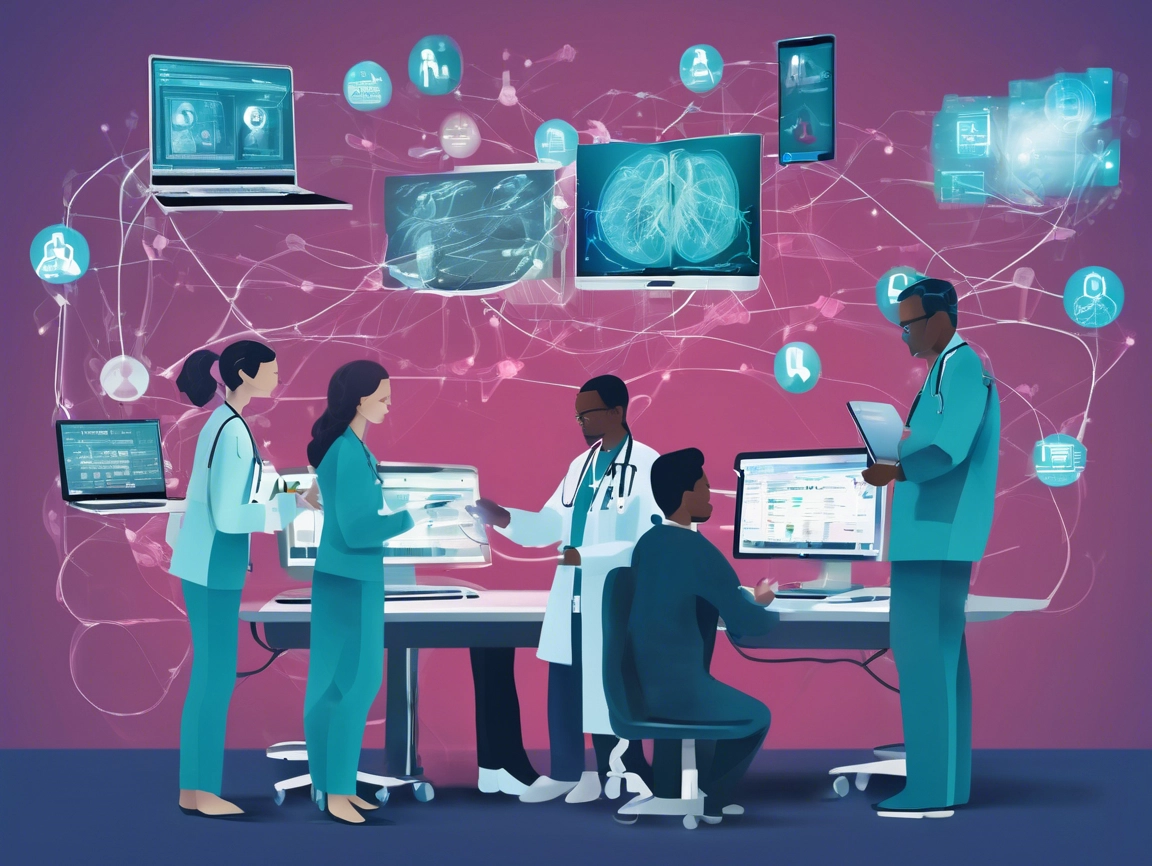Interoperability | HealthIT.gov
Interoperability helps clinicians deliver safe, effective, patient-centered care. It also provides new ways for individuals and caregivers to access electronic health information to manage and coordinate care. Advancing interoperability is now an essential part of most health care activities.
ONC leads and coordinates interoperability activities nationwide. This includes supporting interoperability through technical initiatives such as standards development and health IT certification as well as policy and programmatic initiatives in collaboration with partners across the health care industry.
Friends of ASTP | AMIA – American Medical Informatics Association
AMIA is excited to announce the launch of a new policy initiative – Friends of ASTP. This is a voluntary coalition of organizations that will support The Assistant Secretary of Technology Policy/Office of the National Coordinator for Health Information Technology (ASTP). The Friends of ASTP will advocate on behalf of the agency to Congress.
ASTP develops and oversees the implementation of HHS’ data, technology, interoperability, and artificial intelligence strategies and policies.
AMIA and HL7 Announce Partnership to Advance Interoperability in the Healthcare Community | AMIA – American Medical Informatics Association
May3, 2022 – ROCKVILLE, MD — The American Medical Informatics Association (AMIA) and Health Level Seven® International (HL7) announced a two-year partnership to jointly collaborate and focus efforts to extend comprehensive standards for interoperability in the healthcare community.
AMIA is the leading professional organization for informatics professionals with more than 5,000 members advancing healthcare through informatics. AMIA’s core purposes are to advance the science and profession of informatics, promote the education of informatics, and assure that health information technology is used most effectively to promote health and health care.
The mission of HL7 is to provide standards for interoperability that improve care delivery, optimize workflow, reduce ambiguity, and enhance knowledge transfer among all stakeholders. HL7 is shaping the future of healthcare by making their standards and implementation guides freely available.
Health Level Seven International – Homepage | HL7 International
Overview-clinical – FHIR v5.0.0
HL7® FHIR®1
- http://hl7.org/fhir
– Fast Healthcare Interoperability Resources
is a next-generation interoperability standard created by the standards development organization
Health Level 7 (HL7®). FHIR is designed to enable health data, including clinical and administrative
data, to be quickly and efficiently exchanged.
Interoperability and Health Information Exchange | HIMSS
HIMSS is continually working to provide crucial tools for the advancement of semantic interoperability and standards-based health information and technology systems that lead to meaningful health information exchange. Through our active volunteer groups, which fall under the Interoperability & Health Information Exchange Committee, we are engaging industry leaders year-round to develop the tools and resources you need!
We invite you to discover our resource library comprised of resources created by our volunteer groups that work to further better health through information and technology advocacy and education on the topics of standards-based interoperability and health information exchange.
Interoperability describes the extent to which systems and devices can exchange data, and interpret that shared data. For two systems to be interoperable, they must be able to exchange data and subsequently present that data such that a user can understand it. In order to ensure interoperability, the use of standards enable data to be shared across disparate healthcare settings regardless of the application or vendor.
Health information exchange (HIE), both the noun and the verb, is a dynamic and evolving landscape. HIE is critical for successful healthcare reform, enabling interoperability and meaningful use of health information and technology, and HIMSS is here to help healthcare and health information and technology professionals understand all of the latest developments.
Through our active volunteer groups, such as our Interoperability & HIE Community and the Interoperability & HIE Committee, we are engaging industry leaders year-round to develop the tools and resources you need!
Promoting Interoperability Programs | CMS
About the Promoting Interoperability Program
In 2011, the Centers for Medicare and Medicaid Services (CMS) established the Medicare and Medicaid Electronic Health Record (EHR) Incentive Programs to encourage eligible professionals (EPs), eligible hospitals, and critical access hospitals (CAHs) to adopt, implement, upgrade, and demonstrate meaningful use of certified electronic health record technology (CEHRT).
To continue a commitment to promoting and prioritizing interoperability and exchange of health care data, CMS renamed the EHR Incentive Programs to the Medicare and Medicaid Promoting Interoperability Programs in April 2018. This change moved the programs beyond the existing requirements of meaningful use to a new phase of EHR measurement with an increased focus on interoperability and improving patient access to health information.
Beginning in calendar year (CY) 2022, the Medicaid Promoting Interoperability Program ended. The program is currently known as the Medicare Promoting Interoperability Program for eligible hospitals and CAHs. For additional details about the end of the Medicaid Promoting Interoperability Program, please contact your state Medicaid agency or review the FY 2019 IPPS and LTCH final rule (83 FR 41676 through 41677).
Health information exchange interoperability | American Medical Association
Our vision is to ensure the development, testing and use of new digital health tools that benefit patients and physicians by supporting the frictionless exchange—or interoperability—of medical information across hospitals, clinics and between the entire care team.
Clinician Perspectives on Electronic Health Information Sharing for Transitions of Care | Bipartisan Policy Center
Key findings of the report include the following:
- A majority of clinicians believe that electronic exchange of health information will have a positive impact on health care;
- About 70 percent of clinicians surveyed believe that the lack of interoperability and an exchange infrastructure, and the cost associated with both, are major barriers to electronic information sharing;
- Access to medication lists and relevant laboratory and imaging test results are commonly recognized as high priorities for transitions of care;
- More than half of respondents prefer that information they view as “essential” get “pushed” to them, with the ability to access the rest of the information through a query;
- Timeliness of information is important. A clear majority of clinicians consider “within 24 hours” to be a reasonable timeframe for the exchange of information when a patient requires follow-up care or is being treated for an urgent problem; and
- When updating the electronic health record with information received from an external source, clinicians prefer to be able to selectively pick and choose the information they want integrated.

